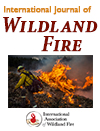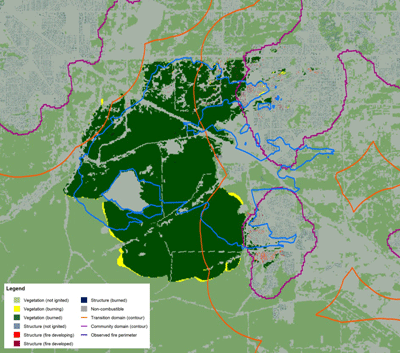An FSim burn probability (BP) map for the conterminous US was compared with observed wildfires from 2016 to 2022 in order to evaluate the suitability of wildfire simulation models for quantifying near-future wildfire risk. Our results highlight where burn probability models may be improved by incorporating dynamic weather and human influences.
WF23196 Abstract | WF23196 Full Text | WF23196PDF (3.4 MB) | WF23196Supplementary Material (4.7 MB) Open Access Article






